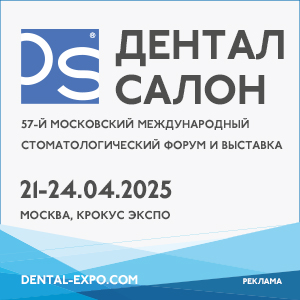The use of the simulator as a systematic scenario for development of student‘s skills of teeth preparation
Downloads
Abstract
The purpose of the study was to improve the effectiveness of the quality of training of dental profile specialists, as well as their attitude towards learning with the use of acrylic teeth and virtual simulators. The study included 55 fifth-year students of Dental Faculty of Peoples’ Friendship University of Russia. All students were divided into 2 groups, in Group 1 (29 students) preparation was carried out with virtual simulator and in the Group 2 (26 students) training was carried out with acrylic teeth. Time of preparation of cavities class I and II (G.V.Black Classification) was an estimated parameter. All students filled special questionnaires. At the end of the cycle, a positive trend was found in both teaching methods. Mean time of cavity class I preparation in acrylic teeth was 352 seconds, in virtual simulator - 319 seconds. For cavity class II mean time was 539 and 560 seconds in acrylic teeth and in virtual simulator respectively. Thirteen of 55 students considered that it is necessary to use both training methods in educational process, 42 people - that simulator is more clear and has better demonstrative properties for learning of teeth preparation. Dental simulator «VirTeaSy Dental» provides an innovative approach to education of dental student because it allows very realistic tactile sensation of tooth preparation process.Key words:
virtual reality, education, educational technologyFor Citation
[1]
Vayts S.V., Daurova F.Yu., Vayts T.V., Kodzayeva Z.S. The use of the simulator as a systematic scenario for development of student‘s skills of teeth preparation. Clinical Dentistry (Russia). 2016; 3 (79): 72—75
References
- Гмурман В.Е. Руководство к решению задач по теории вероятностей и математической статистике. - М.: Высшее образование, 2006. - 404 с.
- Приходько А.И. Практикум по эконометрике: регрессионный анализ средствами Excel. - Ростов-на-Дону.: Феникс, 2007. - 256 с.
- Perrenot C., Perez M., Tran N. et al. The virtual reality simulator dV-trainer is a valid assessment tool for robotic surgical skills. - Surgical Endoscopy. - 2012; 26 (9): 2587-93.
- Suebnukarn S., Haddawy P., Rhienmora P., Jittimanee P., Viratket P. Augmented kinematic feedback from haptic virtual reality for dental skill acquisition. - Journal of Dental Education. - 2010; 74 (12): 1357-66.
- Luciano C., Banerjee P., DeFenti T. Haptics-based virtual reality periodontal training simulator. - Virtual Reality. - 2009; 13 (2): 69-85.
- Suebnukarn S., Hataidechadusadee R., Suwannasri N., Suprasert N., Rhienmora P., Haddawy P. Access cavity preparation training using haptic virtual reality and microcomputed tomography tooth models. - Int Endod J. - 2011; 44 (11): 983-9.
Downloads
Published on
September 1, 2016











